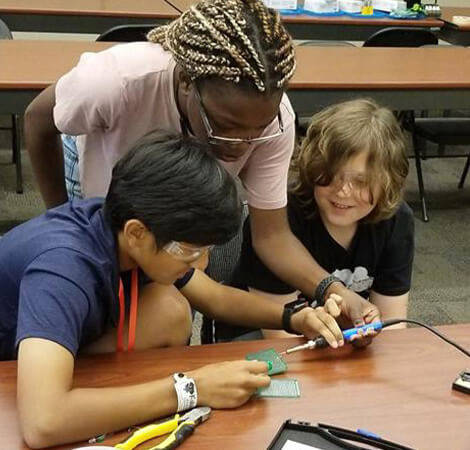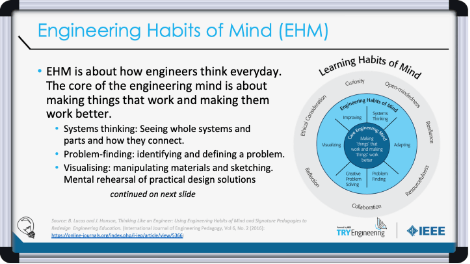EDP & Habits of Mind
Productive Failure
The engineering design process (EDP) involves productive failure: test, fail, redesign, iterate again and again until the best possible solution is found.
The interactive process is important. Engineers use notebooks to sketch ideas, document iterations and keep a record of measurements and calculations.
There can be multiple solutions to the same problem, and choosing the “right” solution can be based on other constraints such as available materials, overall cost, or users’ preference.

Engineering Design Process
Engineering Habits of Mind

When delivering PreU STEM Outreach, we want to consider how we can best cultivate the engineering habits of mind. For example, you can do one of the TryE hands-on activities with students where they will engage in these mindsets through the engineering design process. You can be explicit about these mindsets along the way, spotlighting them during the activity when they can be engaging in that “habit of mind.”
Bill Lucas and Janet Hanson from The Center for Real World Learning at the University of Winchester, UK wrote the paper, Thinking Like an Engineer: Using Engineering Habits of Mind and Signature Pedagogies to Redesign Engineering Education. In the paper, they “ identified the six most distinctive learning dispositions, or engineering “habits of mind” [EHoM] that engineers frequently deploy.”
Click below to learn more about engineering education research and other pre-university STEM research topics.
Discover More
Find the resources you can use to teach school-age children and how they can make the world a better place. Search for lessons, games, engineering disciplines and articles.


